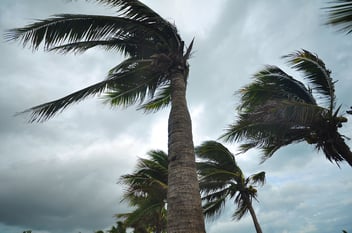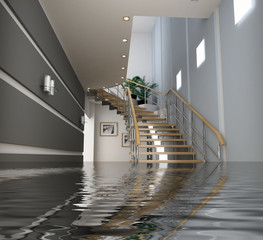After a major storm, insurance companies will send out independent adjusters to assess the damages for your property and come up with an estimate for what your insurance company should pay you for these damages. The goal of the “churn and burn” system is for independent adjusters to write estimates as quickly as possible and turning them into the Independent Adjusting firm they have been contracted through, in order to get more assignments more quickly. This means they will be conducting inspections quickly and may miss important details about your claim.
The independent adjuster who is conducting churn and burn estimates will do 10 claims per day, every day, and label the photos from each home in their car between two inspections. Since they are trying to get out as quickly as possible, they will never write contents, they will simply give you the form and move on.
The adjuster will only recommend repairing roofs, unless there is a completely obvious defect that demands replacement and will only take photos of the roof, instead of chalking it to get a more accurate assessment. They will suggest that you paint ceilings to cover signs of obvious water damage. An adjuster will also avoid recommending drywall be replaced as much as possible.
The adjusters want to avoid kickbacks, so they will try to keep things below the deductible whenever possible. They will also not suggest replacing windows and doors.
Their objective is “finding the ‘sweet spot’ in the Rate Card. For example, staying below the Wind Deductible pays $435. Writing a roof, exterior paint, and a couple interior rooms should land in the $10,001 to $15,000 bracket and pay $675.” If they can get out enough of these estimates, they can bill their Adjuster Firm for thousands of dollars by the end of the first round of claims after a storm.
Signs of a Churn and Burn
According to an anonymous independent adjuster, you can tell if the independent adjuster who inspects your home has conducted a churn and burn from the following traits:
- “Roof is repaired when it obviously should have been replaced
- “Exterior damage is paid for but does not exist
- “Minimal or no drywall replacement
- “No interior damage and Insured swears the IA never entered the house
- “No Contents even with extensive storm damage
- “At the property ‘15-minutes’ per the Insured
- “Adjuster refused to talk to Insured
· “Below Deductible or minimal payment”Since independent adjusters are independent contractors, the competition for these contracts is fierce, which feeds the culture of churn and burn to make sure they can get as much out of their post-storm work as possible. This can be a lucrative field, with some adjusters earning up to $65,000 a year, but the work is not consistent since it is largely dependent on major storms wreaking havoc on towns. After Hurricane Irma, an adjuster evaluating a complex property with a $1 million claim could earn $30,000 just from that single property.
Works Cited:
Merlin, Chip. “Churn and Burn Adjusting—An Admission From An Independent Adjuster” Merlin Law Group, 10 Feb. 2020, https://www.propertyinsurancecoveragelaw.com/2020/02/articles/insurance/churn-and-burn-adjusting-an-admission-from-an-independent-adjuster/




 Storm Damage
Storm Damage  Property Damage
Property Damage Appraisal Services
Appraisal Services Contact Us
Contact Us




.jpg)
 claims@ucspa.com
claims@ucspa.com Mon-Fri: 9:00am-5:00pm
Mon-Fri: 9:00am-5:00pm